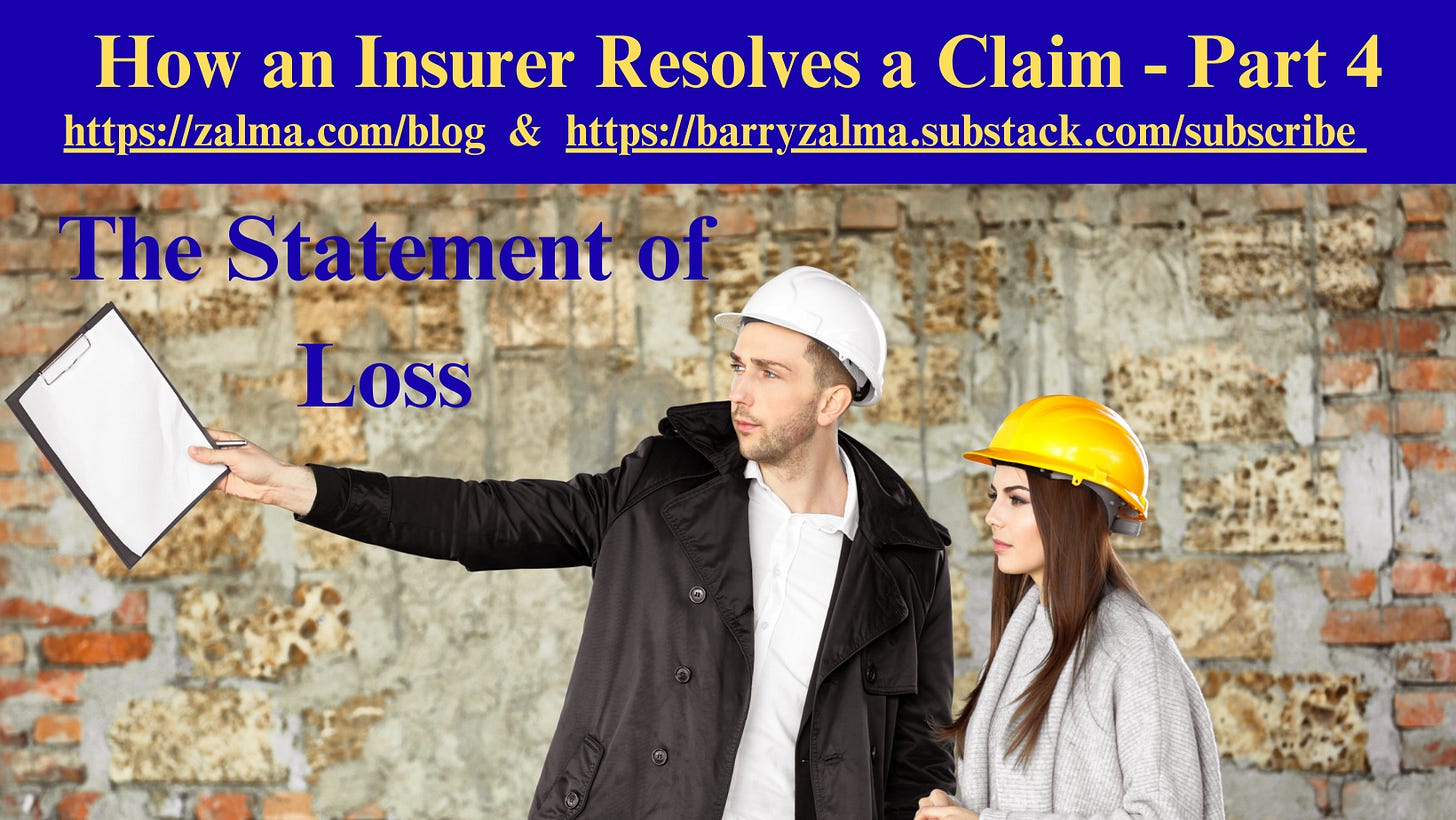How an Insurer Resolves a Claim - Part 4
The Statement of Loss - Essential for Closing a First Party Property Claim
You’re reading from the free part of Excellence in Claims Handling until you reach the paywall. You should consider joining as a paid member to get full access to articles for members only, to our news, analysis, insurance coverage, claims, insurance fraud and insurance webinars, by clicking at the button above.
The adjuster must complete a statement of loss at the close of every adjustment. This is the document the adjuster uses to clarify the agreement between the company and the insured. It should be part of the adjuster’s final report and must be completed before the sworn proof of loss is accepted. A statement of loss is a summary, in numerical form, of the investigation and adjustment. The statement of loss always contains the following information set up in three columns:
1. Insurance: a description of all insurance available to the insured from any source;
2. Loss: a statement of the amount of the loss broken into as many categories of loss as are applicable to the particular claim; and
3. Claim: a statement of the amount of claim, which is usually less than the amount of loss.
To reach the amount of claim the adjuster usually deducts from the amount of loss the deductible, applicable depreciation or betterment, special limits of liability, and/or co-insurance penalties.
Adjusting the Commercial Loss
The adjustment of a commercial loss is performed in the same manner as any other property loss. The difference is one of tone rather than substance.
Adjusters who usually deal with a business entity, and its officers or employees, rather than an individual find claims handling is easier. The adjuster has knowledge of the business and the people who operate the business. Familiarity and a good working relationship over a period of months or years benefits both the insured and the insurer.
A fire can be devastating for a business if it is not rapidly put back to work after a loss. The adjuster must recognize this fact and act quickly to complete a fair and thorough investigation. To adjust the commercial property loss the adjuster must be familiar with the coverages, commercial real and personal property, and have an ability to deal with commercial executives.
An adjuster must always be absolutely certain which endorsements apply to the insured. The adjuster reviews the loss notice and re-reviews the coverages to ascertain which coverages apply to the type of loss reported. He or she makes immediate contact with the insured so that he or she may inspect the loss.
If there is a potential loss of earnings it is important to collect as much business documentation as possible so the history of the business can help to determine the amount of loss. Loss of earnings forms vary greatly. It is important that the terms and conditions are explained to the insured and that the adjuster should collect documents for analysis, possibly by a forensic accountant, including:
four years of corporate tax returns;
four years of profit and loss statements and balance sheets;
bank account statements and canceled checks;
one year of source documents on payroll, expenses, costs that continue, costs that do not continue, leases, contracts, and any other relevant business documents; and
if business information is kept on computers, the software used and a backup copy should be obtained on a memory stick or a disk.
The adjuster must always conduct a thorough investigation of the scene of the loss. He or she must establish the cause and origin of the loss and obtain a general idea of the extent of the loss and what expert assistance will be required to complete the investigation and adjustment.



